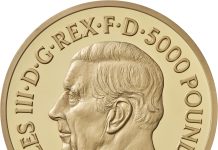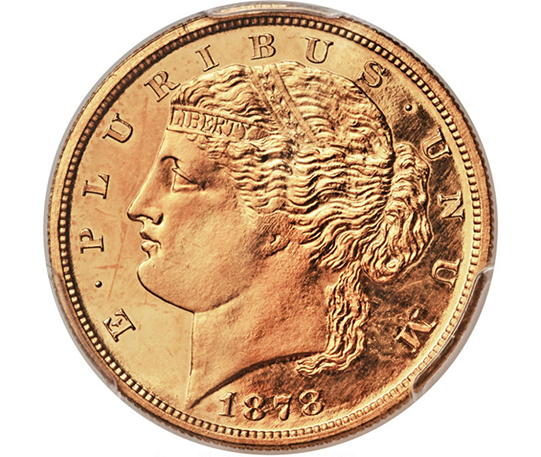
By COINage Staff
A number of stand-out lots are coming to auction during Heritage Auctions’ U.S. Coins Signature Auction, April 23-25.
More than 2,500 lots from 14 single-owner collections and from clients around the world highlight the sale, which represents the auctions originally scheduled to take place during the Central States Numismatic Society (CSNS) annual convention, which was cancelled.
Among the single-owner collections attracting attention ahead of the sale is the Donald G. Partrick Collection and Part V of the Bob R. Simpson Collection, according to a release issued by Heritage Auctions.
Donald G. Partrick Collection
In terms of great Colonial collections, the Donald G. Partrick Collection reigns among the legendary collections of the hobby. Well representated during the sale are 200 pieces from the Partrick collection of U.S. half cents, including many Condition Census coins and scarce varieties. According to the Heritage Auctions’ release, “This superb collection-within-a-collection was assembled by Partrick with the expert assistance of advisor and friend Jon Hanson. Spoons and other silver pieces crafted by early colonial silversmiths such as Ephraim Brasher and Joseph Richardson, Jr., are also featured.”
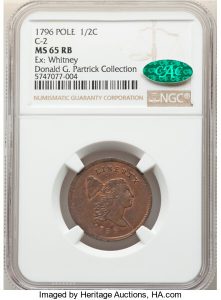 Among the featured coins of the Partrick collection set to sell:
Among the featured coins of the Partrick collection set to sell:
• 1796 With Pole half cent, C-2, B-2a, High R.4, MS65 Red and Brown NGC. CAC.
• 1796 No Pole half cent, C-1, B-1, MS63+ Brown NGC. CAC.
An important year in American coinage, 1796 was the first year that saw production of every denomination authorized in the Mint Act of 1792, according to the lot description.
• 1943 Bronze Lincoln Cent, MS62 Brown, PCGS. CAC.
As history reveals, thanks in part to Henry Ford, the 1943 Bronze cent is among the most famous and sought-after error coins. The coin became the focus of national attention when rumors swirled that Ford was offering a new car to anyone who could find a 1943 “copper” cent for the innovative automobile icon. Despite the fact that no car was up for grabs, the story became the talk of the town, placing the coin squarely in the history books.
• 1793 George Washington President Oval Engraved Indian Peace Medal, Silver,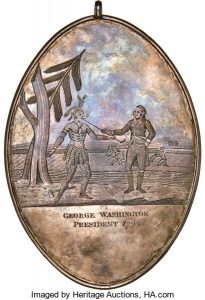 by Joseph Richardson, Baker 174 Unlisted, Belden 8-B, Prucha 31, Gilcrease 6.12, Genuine NGC.
by Joseph Richardson, Baker 174 Unlisted, Belden 8-B, Prucha 31, Gilcrease 6.12, Genuine NGC.
Surviving pieces like this oval engraved medal are extremely rare, and even more so that it is held privately. The medals are part of an ancient custom, an extension of goodwill during negotiations of treaties and the like, to paraphrase a description ascribed to Thomas Jefferson in 1793.
Bob R. Simpson Collection, Part V
This collection includes more than 100 selections from regular U.S. series and 130 patterns from a storied collection that has made numismatic history more than once.
Among the lots already garnering extensive bidder interest are:
• 1794 DT$1 Dollar, Judd-18, Pollock-27, Unique, VF25 PCGS.
The 1794 dollar has always been a classic in the American series. Its net mintage of 1,758 coins represent the first silver dollars ever issued by the United States Mint, and only 140 to 150 pieces are thought to survive in all grades.
• 1878 $5 Liberty Head Half Eagle, Judd-1570, Pollock-1764, Unique, PR65+ Cameo PCGS. CAC.
This only known example represents one of the earliest forms of anti-counterfeiting, being struck in gold on a thin, reeded-edge planchet with a diameter measuring close to one inch (25.44 mm), compared to the 21.6 mm that was standard at the time, according to the auction lot description.
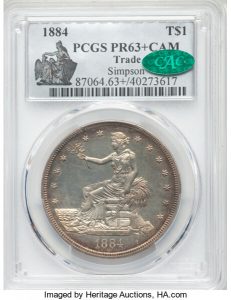 • 1884 T$1 Trade, PR63+ Cameo PCGS. CAC.
• 1884 T$1 Trade, PR63+ Cameo PCGS. CAC.
One of only 10 known examples, according to the Heritage Auctions’ lot description, “…the 1884 Trade dollar was considered a clandestine issue, like the Class III 1804 dollar or the 1913 Liberty nickel, due to its extreme rarity and the lack of official documentation about its striking. However, recent research has established that the coins were produced for legitimate purposes in an entirely routine manner. It was their unorthodox preservation, in the face of changing policy at the U.S. Mint, that caused much confusion for numismatic scholars, down to the present day.”
For more information about this and other auctions, visit www.ha.com.



